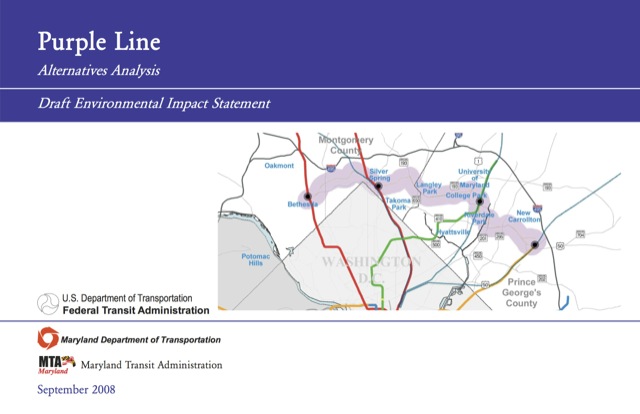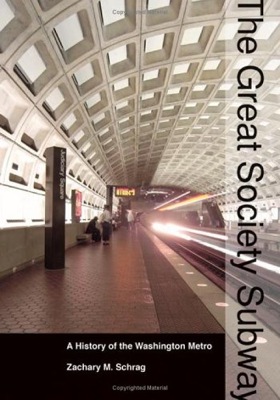Residents of Montgomery County, Maryland, are skeptical of a proposed light-rail line known as the “purple line” (to distinguish it from the DC area’s Red, Orange, Blue, Yellow, and Green heavy-rail lines). AAppropriately so: The Antiplanner has reviewed the draft environmental impact statement (DEIS) and found it to be biased and misleading.
Click on image to download entire, 37-MB DEIS. Click on the link in the above paragraph to go to the DEIS web page where you can download selected chapters.
The DEIS considers seven alternatives to doing nothing: one called “transportation system management” (TSM), which is basically improving bus service without significant new infrastructure; low-, medium-, and high-cost bus-rapid transit; and low-, medium-, and high-cost light rail. (Planners call these “low-, medium-, and high-investment alternatives, but it is only an investment if you get a return.) For a route of about 16 miles, the capital costs range from $5 million per mile for TSM to $92 million per mile for high-investment rail.









